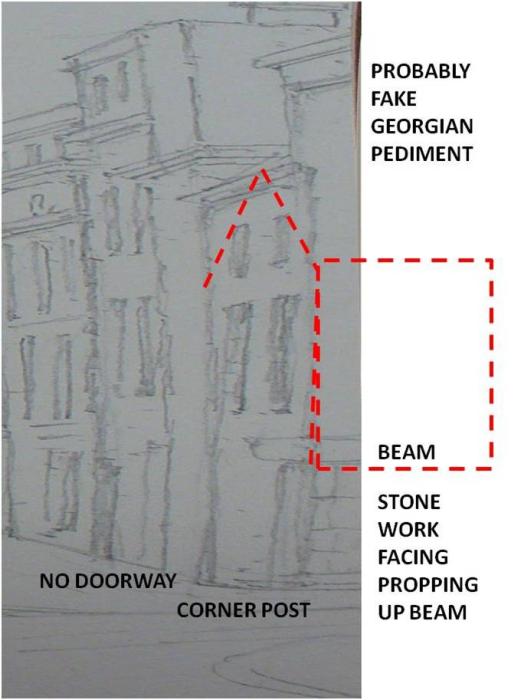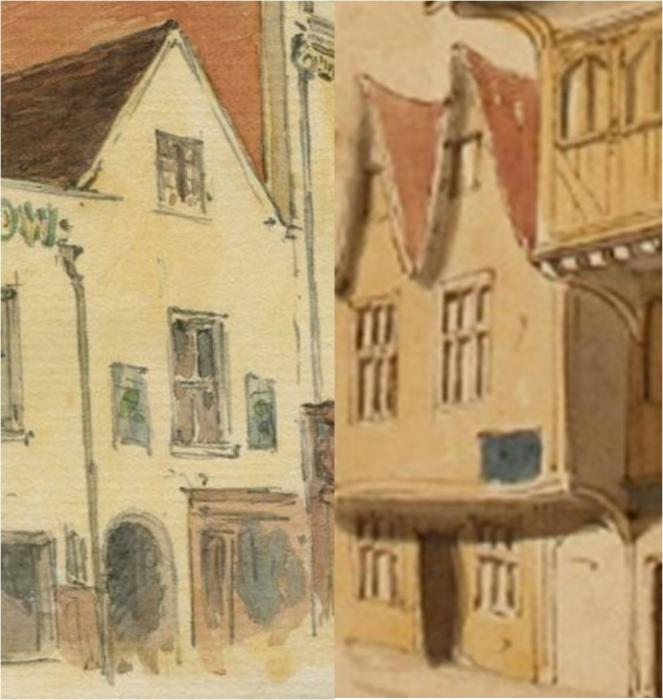|
Helen F
Warrington |
1 of 6
Tue 3rd Sep 2024 8:10pm
We come across odd bits about the pubs from time to time but they tend to get lost in the normal pub topic, so this is just for corrections or additions to the Cov Pub History resource.
|
| Local History and Heritage - Changes for the Cov Pub History | |
|
Helen F
Warrington Thread starter
|
2 of 6
Tue 3rd Sep 2024 8:48pm
Black Bear to the Coach and Horses at 128 plus rooms over the gateway and possibly also 129 Much Park Street.
Edward Waldron (of Alcester, Warwickshire, ironmonger) and John Catterns (of Coventry, tiler) owned Black Bear ?? - 1686
Thomas King 10 September 1686 bought Black Bear (occupied by Charles Millward) . Unknown when name changed.
Thomas King II died 1703
Thomas King III died <1748
Thomas King IV died <1748
Edward King brother to Thomas King IV sold Coach and Horses in 1748
William Lemon 23 March 1748 bought Coach and Horses (occupied by Turville Drayson) died 1759
Mrs Anne Lemon and son 17 Dec 1759 - 1768 inherited Coach and Horses
Cleophas Dullison 6 Nov 1768 - ?? bought the Coach and Horses. Although in the coaching/carting business I'm not sure that he ran them from here, but did use the White Bear (later the Craven Arms) on the High Street. May have bought the property for the stabling, coach houses and malt house. He died some time between 18 Nov 1775 and 1782 but I favour the early date due to a record in John Whittingham's diary.
Probably inhabited by Catherine Dullison and others till 1788 but money owed to carriage maker. Stopped being the inn some time between 1775 and 1781.
1 Nov 1788. executor of the will of Cleophas [II] Dullison (London surgeon) sold the properties to a weaver. Edward Inge attorney.
The Seven Stars/The Half Moon and Seven Stars to the Coach and Horses at 37 Much Park Street.
1777 John Hand proprietor of the 'old established' inn.
1778 The Seven Stars/The Half Moon and Seven Stars owned by Benjamin Lapworth bankrupt - Edward Inge the attorney who dealt with it.
1780 'lately' 7 stars
1781 now the Coach and Horses
The only link that I can find between the two locations of the pub was the Edward Inge who was the attorney for both properties. I can't say why the name was transferred other than it came available.
|
| Local History and Heritage - Changes for the Cov Pub History | |
|
Rob Orland
Historic Coventry |
3 of 6
Fri 13th Sep 2024 6:04pm
Well, this topic is working, thanks, Helen! I managed to find the link between the Half Moon and Seven Stars and the Coach and Horses in this sale notice in the Coventry Standard, 29th October 1781. It appears that even more old newspapers are being added to the BNA (or via FindMyPast, in my case) sites, and it's making pub research so much better. 
|
| Local History and Heritage - Changes for the Cov Pub History | |
|
Helen F
Warrington Thread starter
|
4 of 6
Fri 13th Sep 2024 7:19pm
Yes, I think that was the first time that the name was used at the new address. What I'm not sure is how long it was still used at the old one. Cleophas Dullison (I) bought it while it was still an inn from Anne Lemon but did he continue to run it as such or did it stop some time before he died? His son didn't run it as he was a surgeon in London but there was some provision for Catherine Dullison.
Advert from Monday 26 February 1776 in the Coventry Standard talks of post coaches going from the White Bear on the High Street. It also talks of the late Mr Dullison (so he did die in 1775) and that common stage waggons would go from his home on Much Park Street but it doesn't mention it as an Inn here. Catherine posts the advert.
I can't find an advert for the coach and horses that predates the transfer but I can find adverts for Dullison and his coach/waggon business. |
| Local History and Heritage - Changes for the Cov Pub History | |
|
Helen F
Warrington Thread starter
|
5 of 6
Fri 1st Nov 2024 11:07am
The earliest Coventry pub is supposed to be the White Cellar which is variously recorded in different places Earl Street, Much Park Street, and Lower Park Street (tagged as Little Park Street but may not be). Most often it is located on Much Park Street. It could be on both Earl Street and Much Park Street if it was on the corner but since Jordan Well didn't always exist, it could have been east or west of the entrance to Much Park Street.
The last reference I can find is :-
BA/B/16/292/32
Date: 24 Feb 1498
Scope and Content: By Master John Bonde, master of Trinity Guild, and the fraternity to Anthony Harreson' (of Coventry, draper) of the White Cellar, Much Park Street (lately occupied by Edward Pell of Coventry, vintner) from 25 Mar 1498 for 12 years, rendering 40/- per annum; the guild will maintain the premises, not expelling without due cause the tenant, who is likewise bound, in 100 marks, to observe covenants.
This indicates that it belonged to the Trinity Guild and was no longer serving booze. There are some possible rentals after this that might be the same building but they're guesses. in 1485 135 of 387 properties belonging to Trinity Guild were empty, which might explain why there are no more direct references after Anthony. The Trinity Guild records of course come to a screeching halt in 1546 when it was dissolved by Henry VIII. Henry sold all the Guild's property on Earl Street and Much Park Street to John Hales. So the next step is to see if John Hales had any property on either corner of Much Park Street.
Of note, on the Bradford Map, the west corner of the end of Much Park Street was part of the Earl Street Ward but the east corner belonged to Much Park Street Ward and not Jordan Well.
There are no images of the west corner of Much Park Street because it was widened too early but Troughton captured this very limited view of the east side. This was a modified medieval building that had been modernised in the Georgian era. The lack of a door indicates that the property opened onto Much Park Street. While hard to interpret, the feature at the top of the building was probably a fake Georgian pediment. The main beam at the front is supported by stonework that probably wasn't original and may have been added from city wall demolition material. Bits and bobs of such stonework occurred all over the city. We do know from post war photography that the building that replaced this had a substantial basement, although there is no record of it having old materials.

|
| Local History and Heritage - Changes for the Cov Pub History | |
|
Helen F
Warrington Thread starter
|
6 of 6
Fri 1st Nov 2024 12:55pm
The pictures below are successive modernisations of similar street front buildings with a gable. They were both a few doors east of the corner of Much Park Street. The first is part of the building just to the west of the Dun Cow. The window is not as tall as the Much Park Street version, suggesting it was modified in the 1800s, and not the 1700s. The second is a close neighbour or possibly an earlier incarnation of that. The jetty was retained and the windows look quite early in style. Modernisations varied and sometimes the jetty was boxed in, reducing the pavement and at other times the overhang was removed and the new brick face pushed back to the old property line. The first picture is about a 100 years later than the second.

|
| Local History and Heritage - Changes for the Cov Pub History | |
Website & counter by Rob Orland © 2024
Load time: 487ms